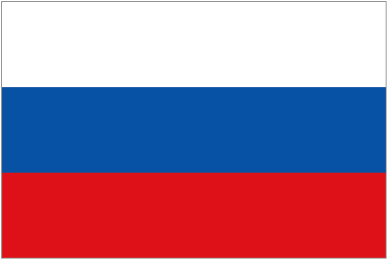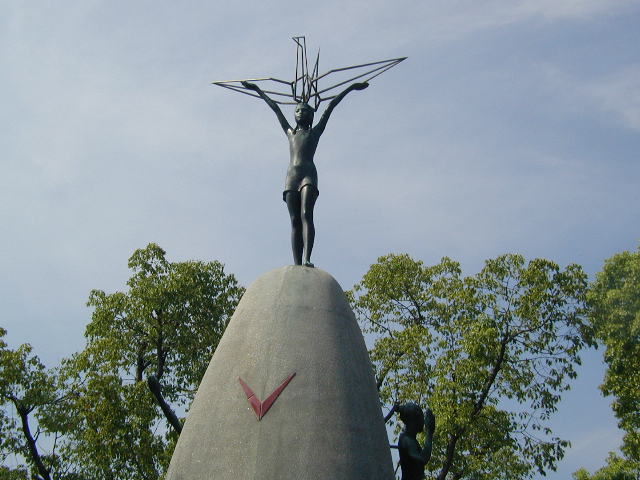
Peace Monuments Dedicated in 1955-1959
(10 years since Hiroshima & Nagasaki)
Right click image to enlarge.
1955
1955 - Gandhi Memorial Museum, Gandhi Smarak Nidhi, Mahatma Gandhi Road, Tammukkam, Madurai (India). Housed in the historic Tamukkam Palace of Rani Mangammal of Nayak dynasty built about 1670 AD. Listed in UN directory "Peace Museums Worldwide" (1998).
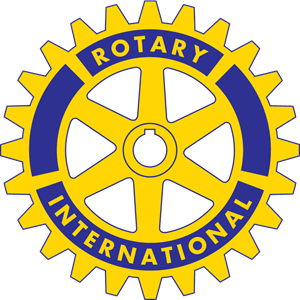



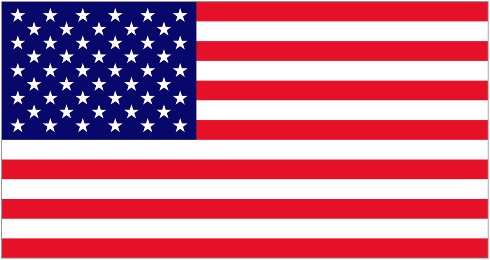
1955 - Berkeley Rotary Peace Grove, Nimitz Way, Tilden Regional Park (via Inspiration Point), Berkeley, California (USA). "A project of the Berkeley Rotary Club which established the grove by planting one hundred Giant Sequoia seedlings close to the site of a former Nike missile base. Each year, one tree is dedicated to honor an individual or an organization that has made a significant contribution to international peace & understanding." Click here to see names of Peace Grove Honorees 1955-2015.

1955 - World Peace Prayer Society, founded in Japan by Masahisa Goi [1916-1980]. Society moved to Wassaic, New York (USA), but when?


1955 - Goddess of Peace, Town Hall, Great Square, Karlstad (Sweden). Marks the 50th anniversary of the peaceful dissolution of the union between Sweden and Norway. Sculpted by Ivar Johnson [1885-1970], "who luckily for his reputation is better known for his 'Woman by the Sea' [right image]." "Since it shows a woman with her foot on a soldier's head and he appears to be grimacing in pain, it seems a somewhat surprising artistic creation to symbolize peace." "Must be one of the ugliest monuments in Europe. Worms emerge from a helmeted skull which is trampled to the ground by a woman breaking a sword in two, symbolising the triumph of peace over war."
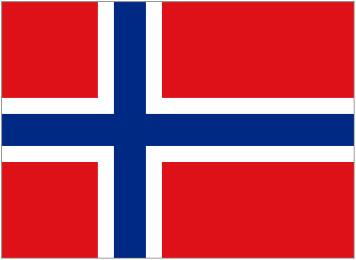
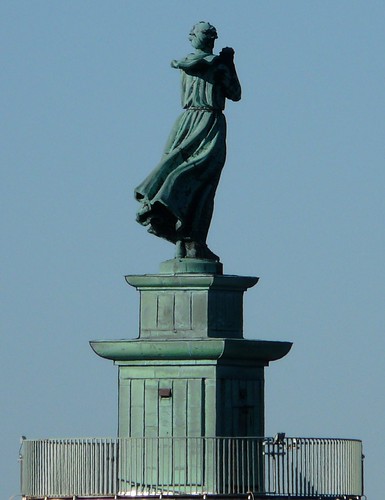
1934 -
Sjömanshustrun / Seaman's Wife, Maritime Museum, Gothenburg (Sweden). Also known as "Woman at Sea." Recalls the Swedish sailors who died during the First World War.


1955 - "Guernica," UN Headquarters, New York City, New York (USA). Full-sized tapistry version of original commisisoned by the government of Spain for the Paris International Exposition and painted in 1937 by Pablo Picasso [1881-1973]. Original is in Madrid (qv).
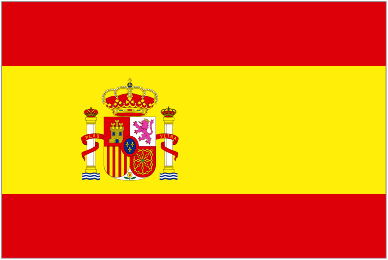
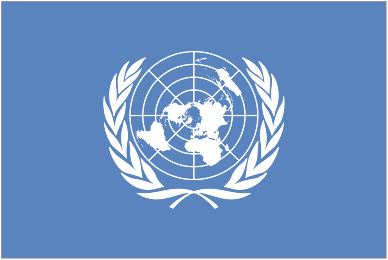

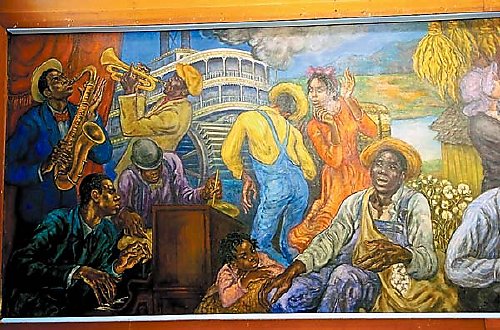


1955 - “The Singing Mural,” Ballroom, University Center, University of Tennessee, Knoxville, Tennessee (USA). By muralist Marion Greenwood [1909-1970]. Depicting the music, dance, and folklore of Tennessee from the Mississippi on the left to the Appalachians on the right. Minority students complained that the Black cotton picker is a slave. Mural vandalized on May 18, 1970. Has been covered since May 1972. Uncovered briefly March 15-17, 2006, when these photos were taken by the Knoxville News Sentinel.
August 5, 1955 - Atomic Bomb Memorial Mound, Hiroshima Peace Memorial Park, Hiroshima (Japan). A vault lies under the mound and contains the ashes of roughly 70,000 victims. #09 of 56 "cenotaphs & monuments" on the Virtual E-Tour. Photo by EWL.
August 9, 1955 - Nagasaki Peace Park, Matsuyama-machi, Nagasaki (Japan). "With the adoption of the Nagasaki International Culture City Law in 1949, the site of the prison was allotted for the construction of the Peace Park." Nagasaki National Peace Memorial Hall for the Atomic Bomb Victims and Urakami Cathedral are nearby.

August 9, 1955 - Prayer Monument for Peace (Peace Statue), Nagasaki Peace Park, Matsuyama-machi, Nagasaki (Japan). 9.7m tall bronze peace statue symbolizing a universal prayer for world peace and for the consolation of war victims. Created by Nagasaki-born Seibo Kitamura. The statue's right hand pointing upwards symbolizes the threat of the atomic bomb. The left hand stretching horizontally symbolizes peace. And the lightly closed eyelids convey the idea of an ardent prayer for the souls of the war dead.
August 9, 1955 - Nagasaki Atomic Bomb Museum, 7-8 Hirano-machi, Nagasaki (Japan). Originally built as multi-purpose facility named Nagasaki International Cultural Hall. Entire structure converted into the Nagasaki Atomic Bomb Museum in August 1975. New building dedicated in August 1995 on 50th anniversry of the bomb. One of 9 Japanese institutions described in brochure for 6th International Conference of the INMP in 2008. Click here for Wikipedia article.



August 24, 1955 - Hiroshima Peace Memorial Museum, 1-2 Nakajima-cho, Naka-ku, Hiroshima (Japan). At site of the atomic bomb on August 6, 1945. New museum building (left) + original building (center) + conference center (right). One of 3 institutions hosting 6th International Conference of the International Network of Museums for Peace (INMP) in October 2008. One of 9 Japanese institutions described in brochure for 6th International Conference of the INMP in 2008. #27 of 56 "cenotaphs & monuments" on the Virtual E-Tour. Click here for Wikipedia article. Click here for other peace monuments in Hiroshma.

September 11, 1955 - Statue of Shinran Shonin, 331 Riverside Drive, New York City, New York (USA). Shinran [1173-1263] is founder of the Jodo Shinshu (Pure Land) school of Buddhism. This statue was in Hiroshima on August 6, 1945. Presented to the USA by Seiichi Hirose of Takarazuka, Hyogo Prefecture, Japan, as "a testimonial to the atomic bomb devastation and a symbol of lasting hope for world peace."
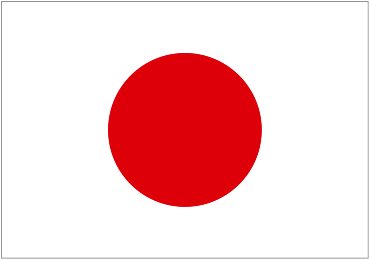


After 1955? - Cordell Hull Birthplace & Museum State Park, 1300 Cordell Hull Memorial Drive, Byrdstown, Tennessee (USA). "Hull was given the sobriquet 'Father of the United Nations' by President Roosevelt." Cordell Hull [1871-1955] received the 1945 Nobel Peace Prize.

1956
March 1956 - Hypocenter Cenotaph, Nagasaki (Japan). Replaced several previous cenotaphs. See one example above. Note reconsructed southern wall of Urikami Cathedral at far right in the scond image.
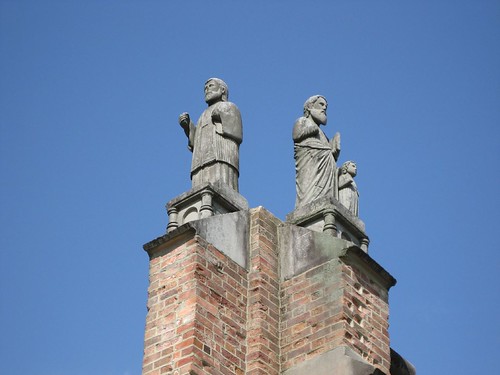


1956? - Ruined southern wall of Urikami Cathedral with statues of the Madonna and John the Apostle. Moved to the Hypocenter and rebuilt. Middle image shows the two statues at the ruined cathedral before restoration.

1956 - "Life out of chaos," Narvik (Norway). Also known as "The woman on the square." One of three peace sculptures in Narvik. Dedicated in 1956, 1995 and 2006. Narkik is known as a city of peace.


1956 - Sarcophagus of Woodrow Wilson, Washington National Cathedral, Cleveland Park, Massachusetts & Wisconsin Avenues, NW, Washington, DC (USA). "Woodrow Wilson [1856-1924] was the 28th President of the US and winner of the 1919 Nobel Peace Prize. Only president buried in DC proper. Originally buried in the Bethlehem Chapel in the crypt of Washington National Cathedral. In 1956, celebrating the centennial of his birth, the Cathedral arranged for his removal to this sarcophagus in the south aisle of the nave proper. It is decorated with symbols of Princeton University (of which he was president), the state of New Jersey (of which he was governor), and the Seal of the US. Windows of the Wilson Bay depict war and peace, commemorating his service as president during WW-I, as does the sword on the top of the sarcophagus."





1956-1969 - Peace & Justice Murals, Third Unitarian Church, Mayfield & Fulton Streets, Chicago, Illinois (USA). 24 murals depicting "saints of liberalism." Painted by artist Andrene Kauffman [1905-1993] over a 14 year period. The "saints" (in alphabetical order) are: Jane Addams, John Peter Altgeld (governor 1893-1897), Susan B. Anthony, E.T. Buehrer (minister 1941-1969), Albert Camus, William Ellery Channing, Confucius, Ralph Waldo Emerson, Mohandas Gandhi (left image), Jesus, Martin Luther King Jr., Thomas Jefferson, Abraham Lincoln (right image), James Martineau, Thomas Paine. Theodore Parker; Joseph Priestley, Siddhartha Gautama, Socrates, Harriet Tubman. Johann Wolfgang von Goethe, Walt Whitman, Roger Williams & Woodrow Wilson.

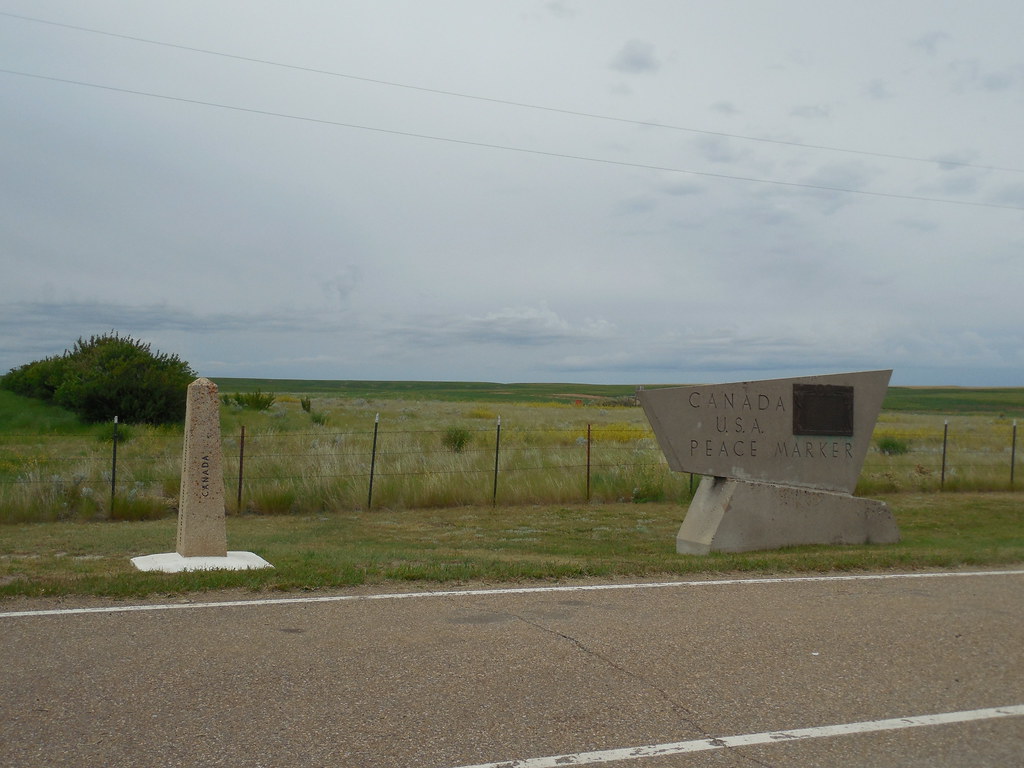

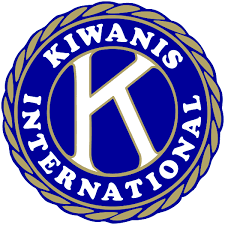

August 5, 1956 - Kiwanis Peace Marker, Wild Horse, Alberta (Canada). Opposite the Canadian inspection station. Plaque on unique concrete base. Middle image from Flickr also shows IBC monument. Right image from Praise FM website shows the marker on the right (east) & and inspection station on the left (west).





October 1956 - Kiwanis "Peace Marker," at Canadian Inspection Station, Carway, Alberta (Canada). On the 1961 list of Kiwanis markers [see top of this webpage]. In front of Canadian inspection station. /// According to the press, "The Carway port of entry will have a whole new look within the next few years... On average, about 90,000 vehicles & 200,000 people cross through Carway each year... 'It’s been years since it’s been done, so far we’ve been fortunate that we haven’t had any major concerns. But the world’s changing, the sophistication of people who are trying to take advantage of our open borders is increasing, so we need to make sure we are a step ahead of the bad guys.'"
1957
1957 - Friendship Monument, Ufa, Republic of Bashkortostan (Russia). Celebrtes the friendship alliance established some 450 years ago between the Bashkirs & the Russians.

c1957 - Nevada Peace Camp, near Nevada Test Site, Nye County, 100 km NW of Las Vegas, Nevada (USA). "An undefined space of land in the desert where anti-war groups, anti-nuclear coalitions, environmentalists & Western Shoshone Indians have gathered over...five decades to protest against activities at the Nevada National Security Site, the US government's continental nuclear weapons testing ground. This particular place, commonly referred to as the Peace Camp, is a place where more than 200 national & international groups have congregated to support & participate in the protests for hours, days & weeks at a time. The protesters are generally a combination of marginalized special interest groups who convene at the camp to express their views & feelings, forming a loosely organized community of short duration. The Peace Camp is the only location in the USA recognized & used repeatedly by so many groups to express their objections to national & world trends in nuclear testing, nuclear waste storage, various wars & devastation of the earth..." /// "The Peace Camp site still contains tent pads, ornamental rock formations & hundreds of pieces of graffiti. 'This archaeological research is unique...the only known intact Cold War protest camp in the world [sic],' said Dr. Colleen Beck, archaeologist with the Las Vegas-based Desert Research Institute." /// "From 1986 through 1994, two years after the US put a hold on full-scale nuclear weapons testing, 536 anti-nuclear protests were held at the Nevada Test Site involving 37,488 participants & 15,740 arrests, according to government records. Those arrested included the astronomer Carl Sagan & the actors Kris Kristofferson, Martin Sheen & Robert Blake."

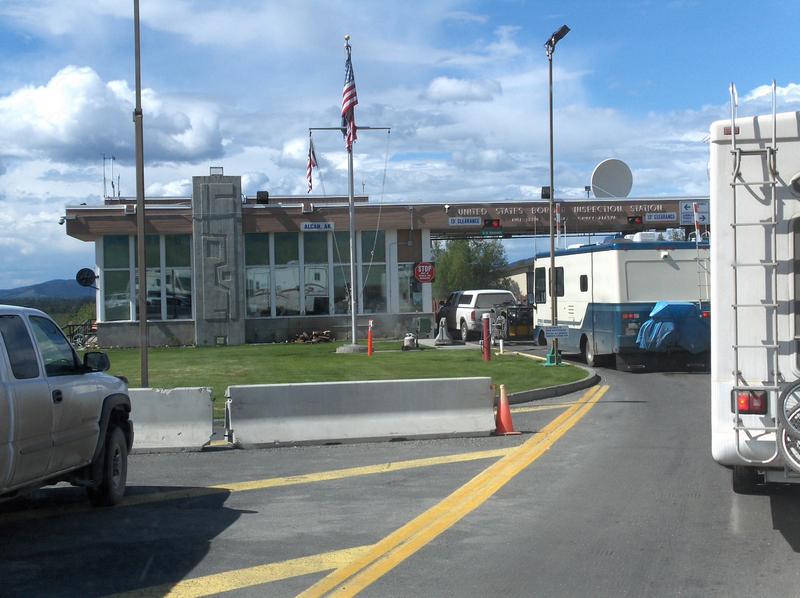


August 4, 1957 - Kiwanis Peace Plaque, Alaska Highway Milepost 1223, Alaska (USA). Left image from University of Alaska. Info from Alaska State Archives. Plaque is apparently attached to a fence. Note attached little plaque (indicating that the full-size place was originally designed for installation on a different date?). Right image shows nearby border crossing. HOW DOES THIS MARKER RELATE TO THE ONE ERECTED MAY 31, 1982 (25 years later)?


August 25, 1957 - Kiwanis marker, at border inspection station, Portal, North Dakota (USA). This station was replaced in November 2012. According the saloon owner, the marble base was broken when the Kiwanis marker was moved. The marker went unclaimed for some time until he took it to his saloon (see images at right). NB: According to the 1961 list & map, this marker was in North Portal, Saskatchewan, on the Canadian side of the border. /// Top image courtesy of Christopher Sjue 26May 2016. /// Bottom image shows an unidentified monument at far right. Is this what's left of the Kiwanis peace marker?


Circa 2014 - Moved to Outback Saloon, 20 Main Street, Portal, North Dakota (USA). From "Lamenting the loss of a friendly North Dakota border crossing" by David Scollard, contributed to The Globe and Mail, March 21, 2016: "...at Portal, there is virtually no habitation on the Canadian side; on the U.S. side there’s a long-closed bank, an Australian (!) restaurant, a few houses and that’s it. In all the times we’d crossed, we had never seen another vehicle, northbound or south.... Stopping at the Australian restaurant for a bite, we noticed an elaborate plaque on the wall, replete with elegant crests, classical figures and a solemn inscription, dated 1957... I asked our waitress how the plaque came to be in this restaurant. 'Oh, they threw it out,' she replied. 'We thought it looked nice so we fished it out of the garbage and put it on the wall.' Fished it out of the garbage. Feeling more than a little deflated, we left the restaurant, crossed the border... and proceeded home [to Calgary, Alberta]...." /// Top image courtesy of Christopher Sjue 26May2016. According to Sjue, the marker is hung above a fireplace in a corner of the saloon.





October 13, 1957 - Kiwanis Peace Cairn & Plaque, Monchy/Morgan Border Crossing, Saskatchewan (Canada) & Montana (USA).. Info & images from website of Kiwanis Club in Swift Current, Saskatchewan (Canada). "Charlie Warren & his family supplied the 3000 lbs. of French Lisk (sandstone) for the column of the Cairn, and the granite plaque that commemorated international goodwill. Kiwanians from Malta (MT) laid the concrete base...Judged by [Kiwanis] International as the most beautiful of the 29 dedicated to that time. Both Clubs have met for Kiwanis picnics at the site during recent years." Restored in 2001. Right image shows US border station at left, Canadian station at right & some unidentified monuments near the latter.
1958


January 2, 1958 - Polio Wall of Fame, Founder's Hall, Roosevelt Warm Springs Institute for Rehabilitation, Warm Springs, Georgia (USA). Also called the "Polio Hall of Fame." Assembles busts of 14 men and one woman who were instrumental in polio research and treatment, plus Franklin Delano Roosevelt and his close aide Basil O'Connor. (The first four are from Germany, Sweden, and Austria.) Designed by sculptor Edmond Romulus Amateis [1897-1981] who also sculpted the "Great Frieze of War and Peace" in Kansas City, MO (qv).
February 21, 1958 - Peace Sign aka Peace Symbol. Designed by Gerald Holtom [1914-1985] for the Campaign for Nuclear Disarmament (CND). Widely used ever since by many individuals & organizations. No standard for color or other format, including flags. Click here for peace monuments using the CND peace sign as a symbol. - Peace Symbol, Trafalgar Square, London, England (UK). Designed by Gerald Holtom [1914-1985] who combined semaphore signals for "N" and "D" (Nuclear Disarmament). Used by the Direct Action Committee Against Nuclear War (DAC) during its April 4 march to Aldermaston. Adopted as its badge by the Campaign for Nuclear Disarmament (CND) in Britain. Now used worldwide. Click here for Wikipedia article.

March 1958 - Vault for the Unclaimed Remains of Victims, Peace Park, Nagasaki (Japan). Contains the skeletal remains of atomic bomb victims collected from Nagasaki City and nearby towns First dedicated in March 1958 for the repose of the victims' souls. New structure completed in June 1994.
May 5, 1958 - Children's Peace Monument, Peace Memorial Park, Hiroshima (Japan). The monument is topped by a statue of Sadako Sasaki. Dedicated on Children's Day. Popular place to deposit origami peace cranes. #16 of 56 "cenotaphs & monuments" on the Virtual E-Tour..

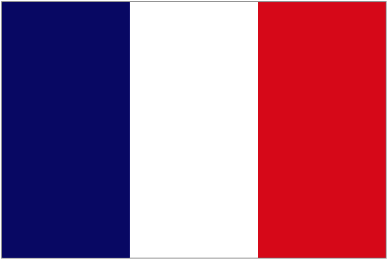
1958 - Jardin de la Paix (Jardin Japonais) / Garden of Peace (Japanese Garden), UNESCO Headquarters, Paris (France). 1,700 square meter masterpiece by Japanese-American landscape architect Isamu Noguchi [1904-1988]. Restored in 2000. Noguchi also designed a bridge in the Hiroshima Peace Park.

1958 - Fridtjof Nansen Institute (FNI), Polhøgda, Lysaker, just outside Oslo (Norway). "Research arm of the Fridtjof Nansen Foundation. Established in 1958 to conduct research within the interest areas of Fridtjof Nansen & to maintain Polhøgda, Nansen's home." Fridtjof Nansen [1861-1930] was a Norwegian scientist, explorer & humanitarian. He received the 1922 Nobel Peace Prize, and the Nansen International Office for Refugees received the 1938 Nobel Peace Prize.




July 17, 1958 - Peace Monument, Robert Moses-Robert H. Saunders Power House & Dam, St. Lawrence-Franklin Deleno Roosevelt Power Project, St. Lawrence River between Massena, New York (USA), and Cornwall, Ontario (Canada). The dam's 32 turbine-generators are divided equally by the international border, with the two sections operated independently by the New York Power Authorty (NYPA) and Ontario Power Generation (OPG). Queen Elizabeth II dedicated the monument on the international border inside the power house.




August 24, 1958 - Kiwanis Marker, Mount Eisenhower, Banff National Park, Alberta (Canada). Not found on-line. From Bruno Engler fonds: Still Photography Series:" "Ceremony to dedicate plaque at Mount Eisenhower broadcasted over CFAC radio." /// Dwight D. Eisenhower [1890-1969] was president of the USA 1953-1961 during construction of the St. Lawrence Seaway. /// NB: Mount Eisenhower reverted to its original name Castle Mountain in 1979.
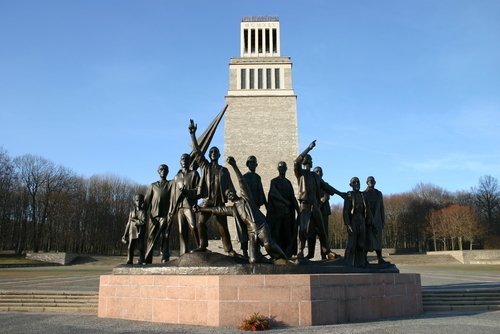
![]()

September 14, 1958 - Nationale Mahn- und Gedenkstätte Buchenwald / Buchenwald Memorial, Ettersberg / Etter Mountain, near Weimar, Thuringia (Germany). Site of Konzentrationslager (KZ) Buchenwald / Buchenwald concentration camp which was established in July 1937 and was one of the first and the largest Nazi concentration camp on German soil. From 1945 to 1950, the camp was used by the Soviet occupation authorities as an internment camp (NKVD special camp number 2). From 1958 to 1990, this was the "Red Olympus," the "holiest shrine of the German Democratic Republic." Chairman of the prewar German Communist Party Ernest Thälmann [1886-1944] was murdered here. Click here for a guide to Buchenwald's many Communist monuments, including Bell Tower & sculpture by Fritz Cremer [1906-1993] depicting Buchenwald resistance fighters (upper image) & Street of Nations honoring victims from 18 different countries (lower image). [Ian Buruma (1994), "The Wages of Guilt," pp. 209-17.]

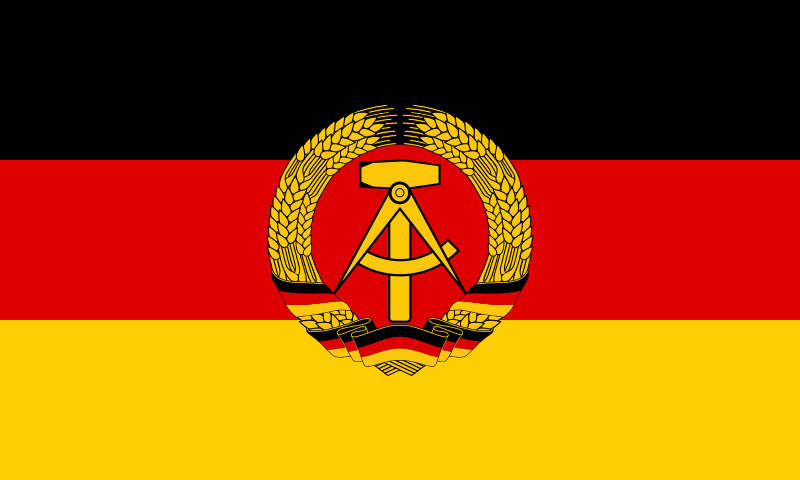
1959

January 3, 1959 - Conscientious Objectors Memorial Plaque, Peace Pledge Union (PPU), 1 Peace Passage, London (England). Names 70 of the 81 British CO's known to have died during World War I. Carved by Dorothy Stevens in 1923. First erected in Berlin (Germany) at the headquarters of the Bund der Kriegsdienstgegner, the German section of the War Resisters International (WRI),. Taken to south Denmark in 1933. Hidden in Sweden in 1940. Now on permanent loan to the PPU, principal British section of the WRI. One of 21 peace monuments named by the PPU website.
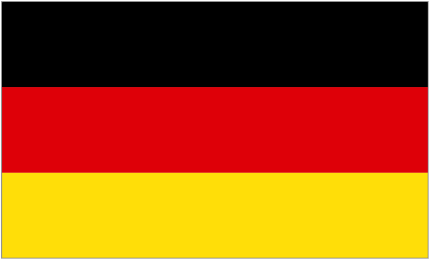
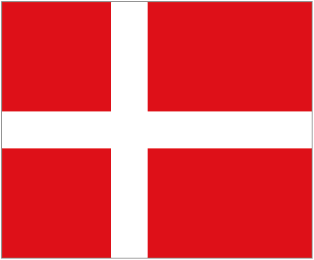
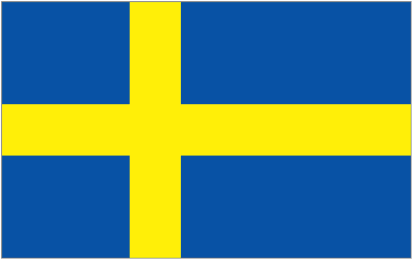




June 26, 1959 Identical US & Canadian stamps commemorating the opening of the St. Lawrence Seaway. /// "Approximately 400 of the [Canadian stamps were] inverted... [The inverted stamp] has a catalogue value of $16,000.00 CAD for a perfect specimen, which is difficult to obtain due to frequent handling of the stamps by the public since its release in 1959."

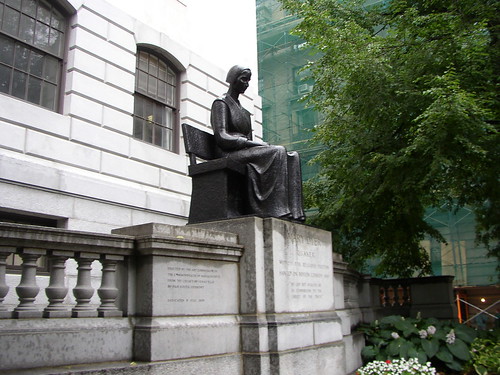


1959 - Statue of Mary Dyer, Massachusetts State House, Boston, Massachusetts (USA). By Quaker sculptor Sylvia Shaw Judson "The Massachusetts legislature enacted a law that every Quaker in its jurisdiction should be banished on pain of death. Mary Dyer [c1611-1660] was hanged in May 1660 for re-entering that colony, rather than abandon the principles of freedom of speech and conscience." Copies are in Philadelphia, Pennsylvania, & Richmond, Indiana.
1959 - Urakami Cathedral, Urakami, Nagasaki (Japan). Largest Catholic church in East Asia when completed in 1914. At ground zero of the atomic bomb. Restored in 1959. Had Western style bell. Ruined southern wall & statues of the Madonna and John the Apostle were moved to the Hypocenter and rebuilt. See above.


1959 - Museo Internazionale Della Croce Rossa / International Museum of the Red Cross, Via Garibaldi n.50, Castiglione delle Stiviere (Italy). Operated by the Italian Red Cross.


1959 - "Let Us Beat Swords into Plowshares", United Nations, New York City, New York (USA). Bronze statue sculpted by Evgeniy Vuchetich to represent the human wish to end all wars by converting the weapons of death and destruction into peaceful and productive tools that are more beneficial to mankind. Donated to the UN by the Soviet Union.
